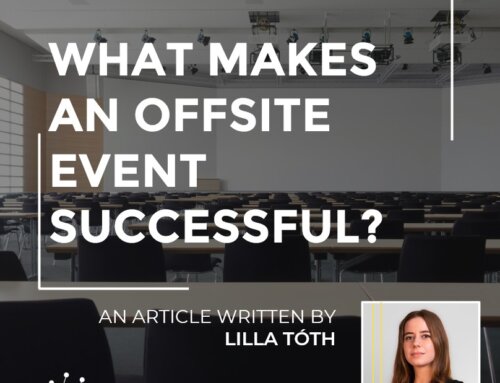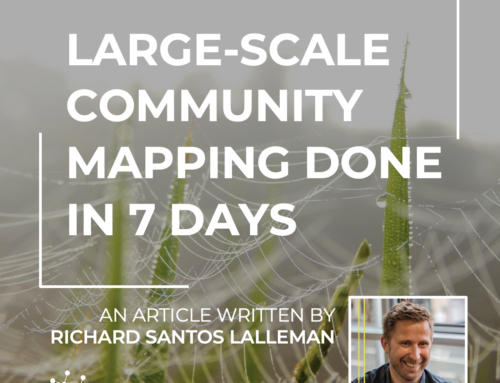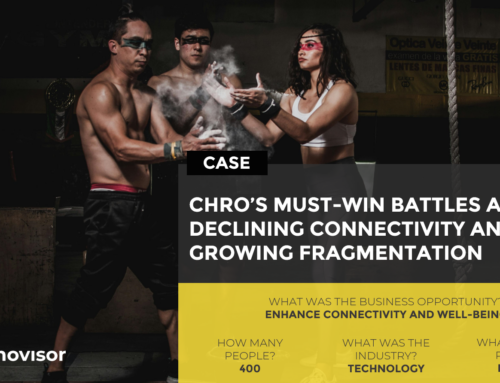30% Improvement Achieved
at a Leadership Seminar
The leadership team was flagged multiple times as a matter of concern through engagement survey results and informal employee feedback. It was time to replace the ‘us vs. them’-culture with a ‘we’-culture.
The CEO saw an upcoming leadership seminar as an excellent opportunity to strengthen alignment and connectivity, aiming to foster a unified leadership team. Clear actions were needed to align the leadership team, especially with a new strategy roll-out to be announced during this seminar.
The CEO engaged with Innovisor.
61% saw a potential in a fellow leader but did not act

Figure 1: One of the six change blockers is leadership team cohesion. Learn more about the #SixChangeBlockers in the “Now what?”-Playbook “Change Is Gridlocked! Now What?”
Before the leadership seminar, Innovisor ran its Off-site Network Accelerator – a Ready-to-Go solution aimed at maximizing connectivity by using critical network insights for work groups, 1-on-1s, and seating plans.
The three critical insights that emerged from the Off-site Network Accelerator were:
- 63% felt their colleagues were not role models for collaboration
- 61% saw potential in a fellow leader but did not act on it
- The leadership team cohesion was in the worry zone – which is a blocker to successful change
The leadership team failed to tap into their potential, leaving them vulnerable. They needed to act on it now. They needed to discipline their connectivity.
Innovisor created three simple, yet powerful actions to discipline their connectivity. Actions that improved the connectivity by 30% – an improvement that moved the leadership team into the win zone.
Action 1: Activate Connections Via Group Work

Figure 2: The work groups with limited collaboration while seeing a potential to be connected
The leaders were shown who they were to do groupwork with – sparking movement in the room. The meeting room buzzed for a couple of minutes while the leaders found their new seats and shook hands with the people they were seated next to.
Each of the groups was given a task around the most pressing challenge identified in the Off-site Network Accelerator:
HOW CAN WE BECOME BETTER ROLE MODELS FOR WORKING AS ONE?
The group came up with practical solutions, ready to be put into action right away. It also brought them closer as a team, strengthening the relationships they needed for a more unified and cohesive leadership group.
Action 2: No-Brainer For Connectivity via 1-on-1s
A handful of leaders had indicated that they both saw a potential to work more closely with each other while no collaboration happened at all.
They were instructed to connect during breaks and beyond the leadership get-together.
Action 3: Drive Connectivity Across Functional Silos via Seating Plan
The seating plan was not created randomly but was designed to address areas where connectivity faced the most friction.
Evidence from collaborative relationships revealed that functional divisions were the main barrier. The seating plan was therefore designed to enhance connectivity across these functional silos.
30% Improvement of Connectivity With Three Simple Actions
The discussion as part of the three actions revealed a hidden conflict. When the leaders were asked the question of what kept them from connecting, words such as “fear”, “distance”, “trust”, “suspicious” and “reputation” were used.
These words were mostly triggered by how leaders communicated: through e-mail.
To ensure the leadership seminar could maintain the achieved 30% improvement in connectivity, they needed to adopt the behavior of “WA-CA-MA”.
First, always consider WA-lking the distance – if possible – to initiate a face-to-face conversation. If this is not possible, consider CA-lling to have the conversation. If this is also not possible due to for example the time difference, your very last choice is MA-iling.
It’s all because face-to-face conversations are a staggering 34 times more impactful than e-mails, underling the importance of personal interaction, as stated in the Harvard Business Review article written by Vanessa Bohns.








